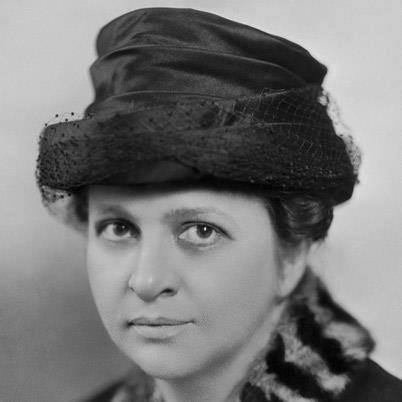
Today in Feminist History is our daily recap of the major milestones and minor advancements that shaped women’s history in the U.S.—from suffrage to Shirley Chisholm and beyond. These posts were written by, and are presented in homage to, our late staff historian and archivist, David Dismore.
A vigorous and much-needed defense of women who work outside the home today from Frances Perkins, who has been New York State’s Industrial Commissioner since Governor Roosevelt appointed her to that post immediately after he took office last year.

One by one, Perkins examined and demolished the many myths and stereotypes that make it even harder for women to find work today than men.
The popular idea that we can solve the unemployment problem by pushing married women – who allegedly work only for “extra” money – out of their jobs and then replace them with men who presumably need the work to support their families was Perkins’ primary target:
“While the families of thousands of unemployed men are being supported today by wage-earning wives, it is disconcerting to hear of campaigns for discharging married women workers. One wonders if the advocates of these drives are acquainted with the circumstances of families from which the great majority of married women workers come; if they have considered what would happen to many of these families should one more bread-winner lose her job now.
Studies made in New York State by the Bureau of Women in Industry of the Department of Labor, like those made by similar organizations elsewhere, show that married women have for some time occupied an important place in our industrial life and that their earnings have an important place in the family budget.
The bureau made a study of women wage-earners in Newburg, New York, in 1929 and found that 29 per cent of all employed women were married women living with their families. A similar study in Binghamton in 1926 revealed that almost half (48 per cent) of the women workers were married and living at home.
The economic needs which drive many wives and mothers to seek gainful employment were revealed by a study of 670 industrial homeworkers in New York State, made by the bureau in 1928. Three-quarters of these women were married and living with their families. The majority felt they could not leave their homes because of family responsibilities or physical disability, yet 83 percent found it necessary to work in order to supplement inadequate family income, and 4 per cent depended upon homework for their entire support. Only 13 percent of these women worked for ‘extras’ and such ‘extras’ included not ‘feminine finery,’ but such things as a high school education for their children.
The earnings of these women’s husbands showed also why the women were working. Although their families were, on the whole, larger than the average American family, the median weekly earnings of the husbands was $28.26; that is, half the husbands earned less than this and half earned more.
It is true that there are many married women working who do not need their earnings in order to live, just as there are married men with larger incomes than they ‘need.’ But whether all these women’s jobs, many of which require special training and experience, could be satisfactorily filled by unemployed men is another question. And what would happen to other men’s jobs – the baker and the laundryman, the merchant and manufacturer of factory-made food and clothing – if thousands of married women suddenly had more time at home to bake and cook and sew and less money to pay others, many of them married men with families, to do it for them?”
Perkins graduated from Mount Holyoke College with a B.A in chemistry and physics in 1902, and earned an M.A. in economics and sociology from Columbia University in 1910. She then became Secretary of the New York Consumers League, and worked to gain better hours and conditions for those in the workforce. Along with Florence Kelley, she succeeded in getting the State Legislature to limit the workweek of women and children to 54 hours.
She personally witnessed the Triangle Shirtwaist fire of 1911, and this shocking event made her an even more zealous advocate of workers’ rights. She has said that the fire was “seared on my mind as well as my heart – a never-to-be-forgotten reminder of why I had to spend my life fighting conditions that could permit such a tragedy.”
Perkins married Paul Caldwell Wilson in 1913, but still uses her birth name, even going to court to win the right to do so. She was appointed to the New York State Industrial Commission in 1918, and became its head in 1926, before attaining her present job last year as State Industrial Commissioner, the highest post in the State Labor Department.
The Roosevelt / Perkins team has been at the forefront of progressive industrial reform and aggressively trying to alleviate the effects the current business depression is having in New York State. Their work should serve as a model for President Hoover, Labor Secretary Doak, Congress, and the nation.





